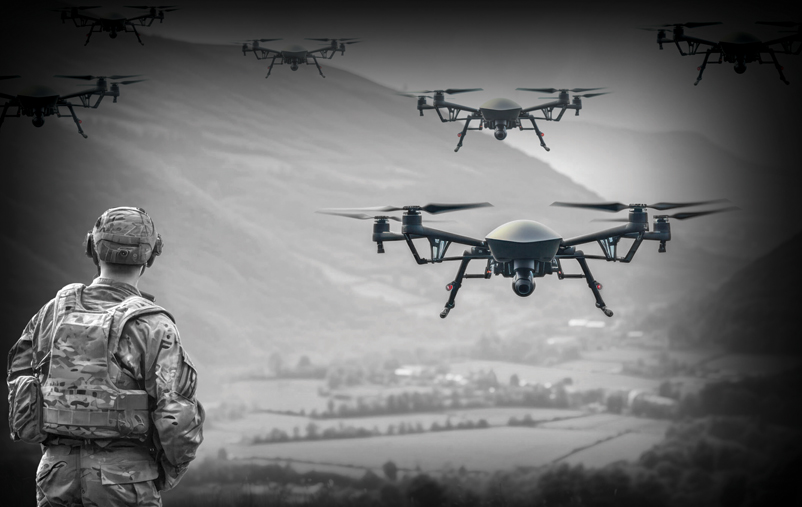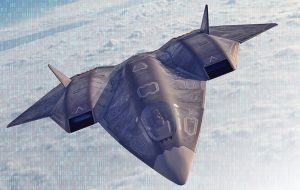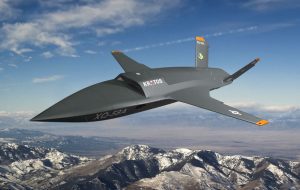In late May 2024, Lithuania, Latvia, Estonia, Finland, Norway, and Poland decided to establish a new defensive zone along their borders with Russia, dubbed the “Drone Wall.”
According to the initial plan, this zone will rely on drones and anti-drone systems to counter eastern provocations and threats, and to prevent smuggling, implicitly referring to Russia, however, the timeline for implementing this plan has yet to be determined.
This study aims to analyse the dimensions of this new defensive concept and assess its effectiveness, especially as it may escalate tensions with Russia. The primary purpose of the drones is to gather intelligence on the Russian interior close to the borders, making these systems susceptible to targeting by Russian forces.
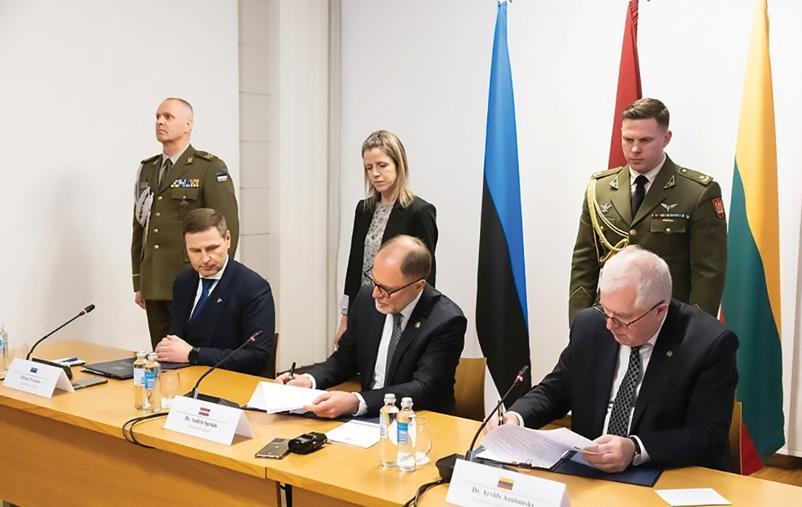
The Air Defence Dilemma
Air defence systems typically comprise two main components: airborne systems and ground-based systems. The primary objective of any air defence system is the effective interception of attacks, whether from fighters, missiles, or drones, by detecting threats from a sufficient distance and deploying weapons to engage them.
Satellites are also a critical element of robust defence systems. For example, American satellites from the Defence Support Program have been an essential part of early warning systems in North America.
These satellites help detect missile launches, space launches, and nuclear explosions using infrared sensors to detect heat from missiles and their exhaust plumes. Since 1995, the United States has made technological advances to enhance the detection of smaller missiles, providing better warnings of short-range missile attacks against US and allied forces worldwide.
Despite efforts to develop sufficient capabilities to detect all aerial threats, a defence system capable of intercepting all types of threats, including drones, ballistic missiles, and emerging threats like hypersonic missiles, has not yet been developed.
The United States has spent approximately $165 billion over 65 years developing air defence systems to counter intercontinental ballistic missiles and other aerial threats. However, these efforts have not yet succeeded, especially as US adversaries like Russia, China, and North Korea develop more advanced and complex missiles, such as hypersonic missiles, which current air defence systems cannot intercept.
Furthermore, the Russian-Ukrainian war since 2022, and the Israeli war on Gaza since October 7, 2023, including limited skirmishes between Israel and Iran, have revealed that there are no air defence systems capable of providing complete protection from all threats. The Iron Dome system collapsed entirely during Hamas’s October 7 attack, when Hamas and other Palestinian groups simultaneously launched a large number of rockets. In June 2024, Hezbollah claimed to have targeted and destroyed an Iron Dome platform at Israel’s Ramot Naftali military base, even without launching a large number of rockets to paralyse the system, as Hamas did.
Dimensions of the Six-Nation Plan:
The “Drone Wall” proposal announced by six European countries can be detailed as follows:
1. The Parallel European Project: Five of these six countries are members of the European Union, except Norway. Therefore, it is expected that these countries might request European funds to finance this project. However, this project does not seem significantly different from the “European Sky Shield Initiative,” announced by several European countries, led by Germany, on 13 October 2022. The initiative aims to establish a “European Sky Shield” to fill gaps in European air defence systems in light of Russia’s invasion of Ukraine. The number of member countries increased to around 21 after Switzerland and Austria joined the initiative in mid-2023, and Poland joined simultaneously with the “Drone Wall.”
This raises questions about the differences between the “Drone Wall” and the “European Sky Shield.” One possible answer is that the Sky Shield has not progressed quickly enough, partly due to the substantial funding required to purchase air defence systems. Additionally, European countries have been directing a portion of their military industrial output to support Ukraine against Russia, especially after Ukrainian President Volodymyr Zelensky’s calls for Western countries to provide air defence systems to help Ukraine counter Russian attacks during the first half of 2024.
The German project has faced criticism from France, as the European Sky Shield relies primarily on purchasing American and Israeli air defence systems, thereby neglecting European companies and their potential to develop defensive systems against perceived future Russian threats. To reconcile German and French perspectives, some research centres have suggested that European countries borrow funds to purchase American defence systems while allocating part of their budgets to develop European air defence systems. This would mean that short-term purchases of American systems would not conflict with European defence industries’ medium and long-term development.
Nevertheless, both the Drone Wall and the European Sky Shield face significant funding issues. Lithuanian Interior Minister Agne Bilotaite announced that the Drone Wall is still in the early stages of development and has no specific timeline for implementation.
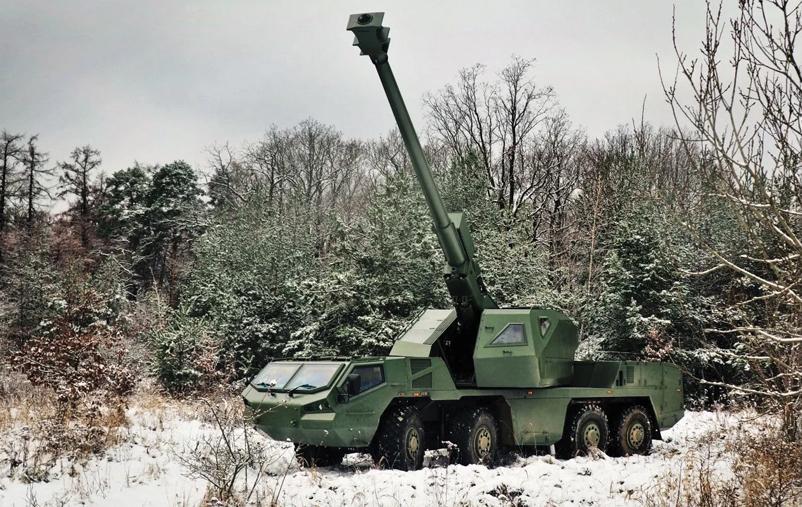
2. The Increasing Fear of Russia: There is a growing number of defence and security projects in Europe, reflecting an increasing fear of Russia, especially in light of Ukraine’s failure in its counteroffensive against Russia. Many European countries, particularly in Eastern Europe, had hoped this offensive would weaken Moscow.
An example of conflicting defence projects is not only the discrepancy between the Drone Wall and the European Sky Shield but also the signing of an agreement by Estonia, Latvia, and Lithuania in January 2024. This agreement aimed to “deter and defend against military threats if necessary,” despite the three countries being NATO members. This raises the question of whether these countries fear that NATO might not provide sufficient support, a scenario that seems unlikely.
3. Mitigating Potential Threats: The six nations announced that the primary goal of the Drone Wall is to monitor drones and acquire the capability to counter Russian activities. Thus, this alliance might be aimed at thwarting any Russian sabotage operations. In September 2022, Western countries allegedly used an explosion to sabotage the Nord Stream 1 and 2 pipelines, which seemed to have angered Russia. Conversely, another attack occurred in northern Lithuania targeting the Amber Grid gas pipelines, connecting the Baltic States to Poland, in January 2023, just months after the Nord Stream explosions.
Although the operator of the Amber Grid pipeline ruled out sabotage, it cannot be dismissed that Moscow might retaliate against any NATO country involved in similar sabotage acts, like the Nord Stream explosions. Hence, the Drone Wall aims to counter threats from border infiltration and sabotage operations. This is reinforced by the fact that the Lithuanian Interior Minister announced the Drone Wall initiative.
4. Potential Threat to Moscow: Despite the Drone Wall being presented as a defensive measure, it cannot be overlooked that it might pose direct threats to Russia. Drones are known to be used for reconnaissance and espionage. Even though they fly outside the targeted state’s borders, they can use their surveillance equipment to spy and capture signals and images within the target state, which could escalate tensions with Russia.
Prominent Challenges
Despite the ambitious European projects to secure their airspace from potential Russian threats, these plans will face numerous challenges, which can be detailed as follows:
1. Overcoming Russian Superiority:
US and Ukrainian military officials recently acknowledged Russia’s superiority in electronic warfare, negatively affecting the performance of American weapons. For instance, Daniel Patt, a senior fellow at the Hudson Institute, noted that Russian jamming reduced the effectiveness of the GPS-guided Excalibur 155mm artillery from 70% to 6%. Drones, small-diameter bombs, and some communication systems have proven similarly vulnerable to jamming, undermining their effectiveness.
The Baltic States are among the most exposed to these threats. In early 2024, the foreign ministers of the Baltic States separately accused Russia of jamming GPS signals across the Baltic Sea region, forcing civilian flights between Helsinki and Estonia to abort mid-flight. The jamming also disrupted signals used by boats in the Baltic Sea, prompting the Swedish Navy to issue warnings regarding shipping safety. The Baltic States accuse Russia of jamming from the Kaliningrad enclave, situated between Poland and Lithuania on the Baltic Sea. This Russian measure might not necessarily be offensive but could be defensive, as a senior official from one of the Baltic States suggested that Russia might be trying to protect Kaliningrad from potential Ukrainian drone attacks. Regardless, Moscow’s superiority in electronic jamming will undermine the effectiveness of employing drones as part of the European Drone Wall defensive system.
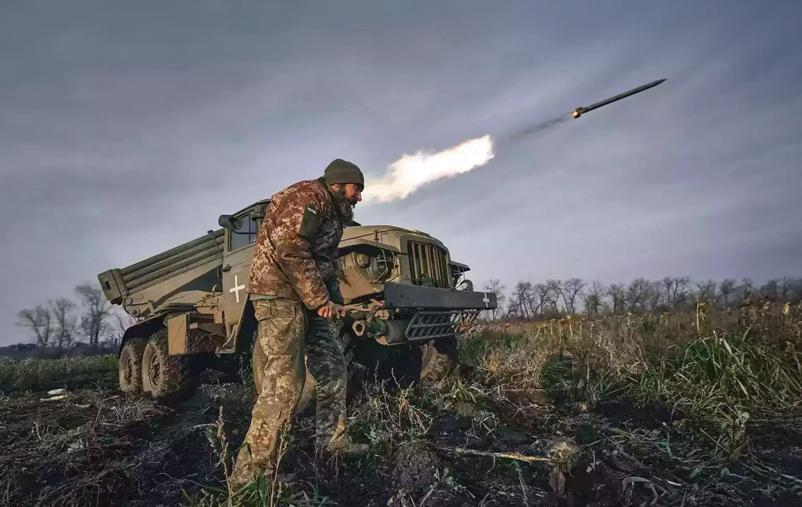
2. Escalating Tensions with Moscow:
Air defence systems pose a significant issue; although they primarily serve a defensive role, they can represent a substantial threat to other nations. The ability of a country to intercept all threats from ballistic or cruise missiles or other aerial threats theoretically implies it can launch ballistic missile strikes against other countries and intercept retaliatory strikes, undermining nuclear deterrence. Deterrence relies on a state’s ability to absorb a first strike and retaliate, ensuring mutual destruction.
This reality is evident in the history of air defence systems among major powers, specifically between the Soviet Union (and later Russia) and the United States. Military theorists distinguish three main eras. The first era spans from the 1960s to 1972, marked by both countries developing intercontinental ballistic missiles, submarine-launched ballistic missiles, and air defence systems against such missiles without restrictions, leading to a significant arms race.
The second era lasted from 1972 to 2002, following the signing of the Anti-Ballistic Missile (ABM) Treaty. The treaty aimed to limit anti-ballistic missile systems used to defend against nuclear-armed ballistic missiles. According to the treaty, each party was limited to two ABM systems with no more than 100 interceptors each.
The third era began in June 2002, when the US, under President George Bush, withdrew from the ABM Treaty to develop missile defence systems. However, this spurred Russia to develop not only its air defence systems but also hypersonic missiles that are difficult to intercept with traditional air defence systems. Thus, a new arms race began post-2002, with both countries striving to develop air defence systems and offensive ballistic missiles.
Therefore, any nation’s attempt to secure itself fully ultimately threatens others. Historically, such efforts have not succeeded and often produced counterproductive results. For instance, the US withdrawal from the ABM Treaty and its attempts to develop a missile shield led to Washington’s failure to create such a shield and prompted Russia to acquire hypersonic missiles that current air defence systems cannot intercept.
Conclusion
Defending against aerial threats remains practically challenging. Nations continue to seek defence against aerial threats by acquiring offensive missile capabilities to deter adversaries, contributing to stability in interactions among major powers and their military alliances. However, all European defence concepts, whether represented by the Drone Wall or the European Sky Shield, remain theoretical and untested in practical scenarios. The ultimate goal of intercepting all aerial threats seems difficult to achieve, as no Western air defence systems have proven capable of intercepting all aerial threats, a fact evident in the Russian-Ukrainian war.
» By: Dr. Shadi Abdelwahab
(Associate Professor at the National Defence College – Abu Dhabi)


